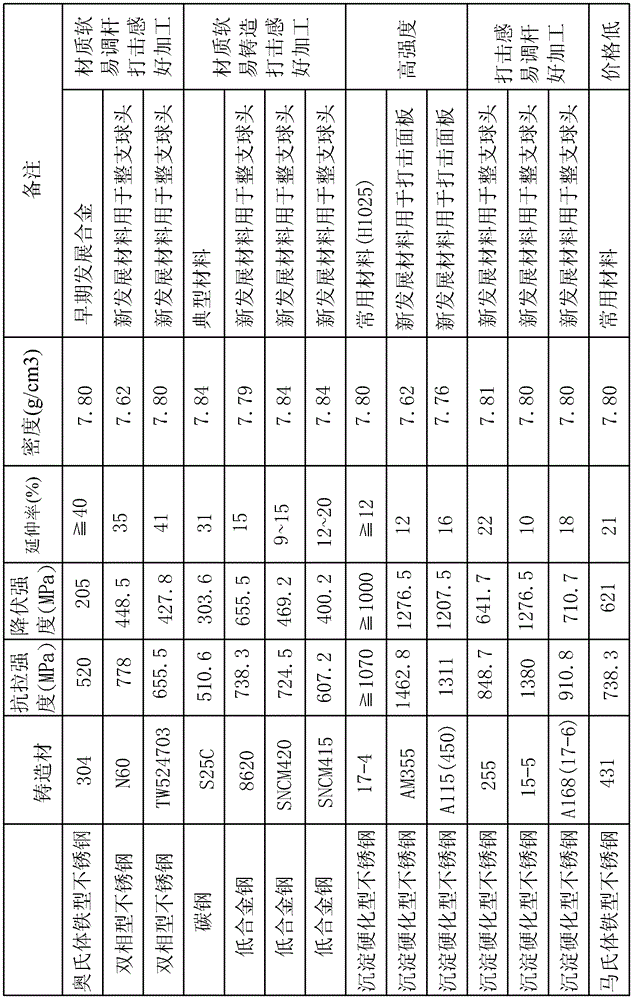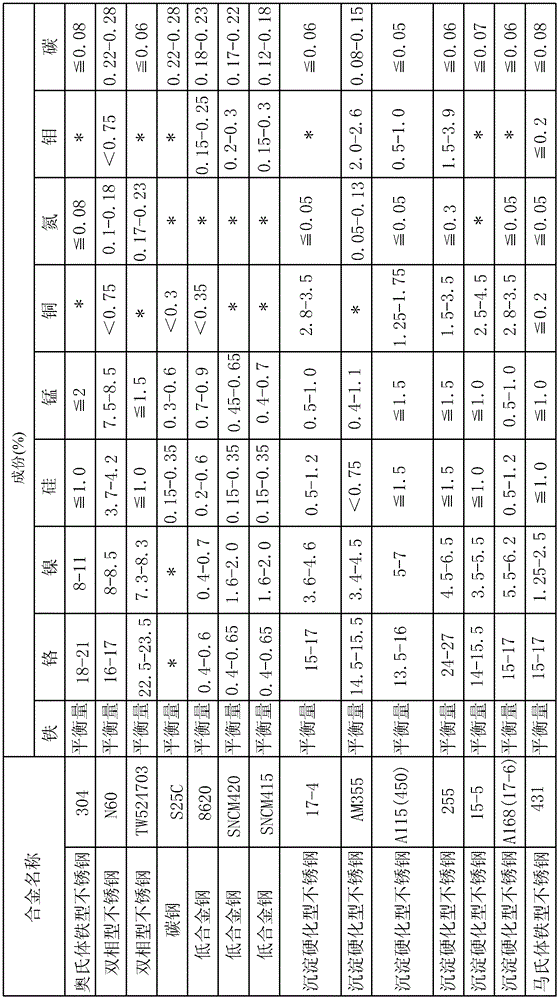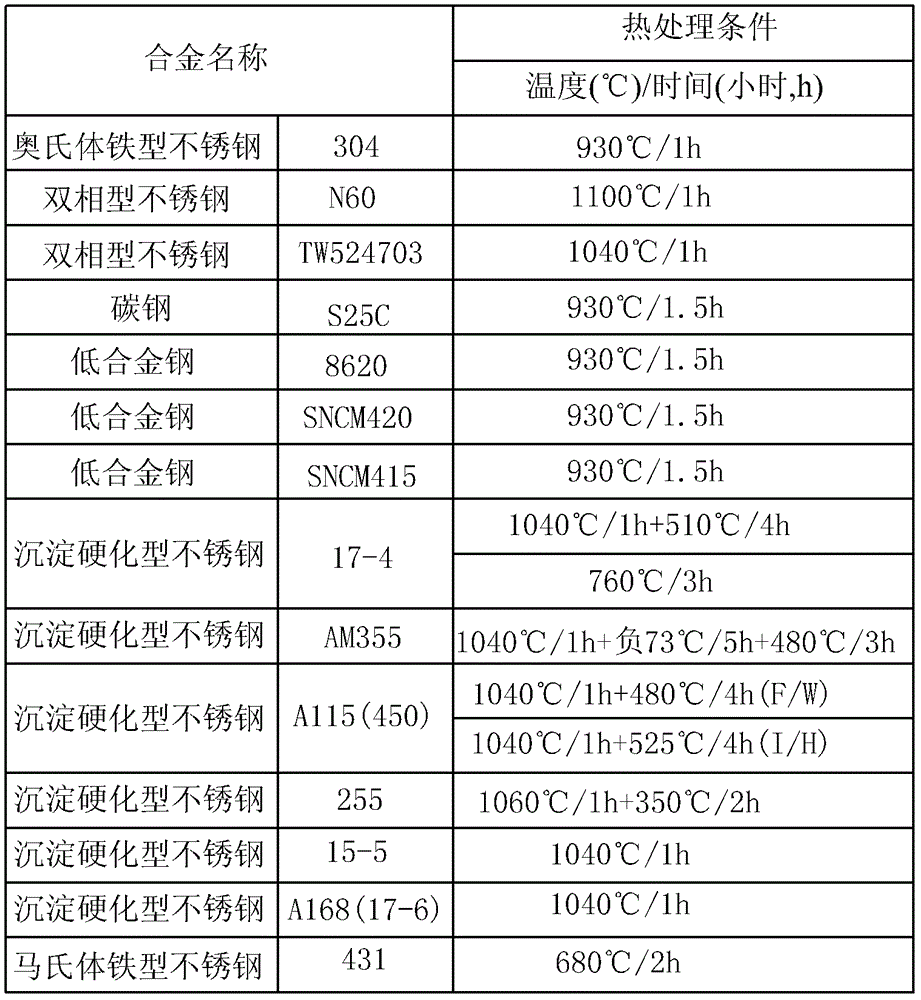Inconel for golf club heads
A golf club head, iron-chromium-nickel technology, used in golf balls, golf clubs, sports accessories, etc., can solve the problems of reduced tensile strength, prolonged process time, easy rust, etc., and achieves control of alloy process costs, The effect of excellent mechanical properties
- Summary
- Abstract
- Description
- Claims
- Application Information
AI Technical Summary
Problems solved by technology
Method used
Image
Examples
experiment example 1
[0054]
[0055] After precision casting with the above alloy composition ratio, the obtained alloy sample was treated at a high temperature of 1050°C for 1 hour and then air-cooled to obtain Experimental Example 1 of the iron-chromium-nickel alloy of the golf club head of the present invention.
experiment example 2
[0057]
[0058] After precision casting with the above alloy composition ratio, the obtained alloy sample was treated at a high temperature of 1050°C for 2 hours and then air-cooled to obtain Experimental Example 2 of the iron-chromium-nickel alloy of the golf club head of the present invention.
experiment example 3
[0060]
[0061] After precision casting with the above alloy composition ratio, the obtained alloy sample was treated at a high temperature of 1050°C for 8 hours and then air-cooled to obtain Experimental Example 3 of the iron-chromium-nickel alloy of the golf club head of the present invention.
PUM
| Property | Measurement | Unit |
|---|---|---|
| tensile strength | aaaaa | aaaaa |
| yield strength | aaaaa | aaaaa |
| tensile strength | aaaaa | aaaaa |
Abstract
Description
Claims
Application Information
 Login to View More
Login to View More - R&D
- Intellectual Property
- Life Sciences
- Materials
- Tech Scout
- Unparalleled Data Quality
- Higher Quality Content
- 60% Fewer Hallucinations
Browse by: Latest US Patents, China's latest patents, Technical Efficacy Thesaurus, Application Domain, Technology Topic, Popular Technical Reports.
© 2025 PatSnap. All rights reserved.Legal|Privacy policy|Modern Slavery Act Transparency Statement|Sitemap|About US| Contact US: help@patsnap.com



